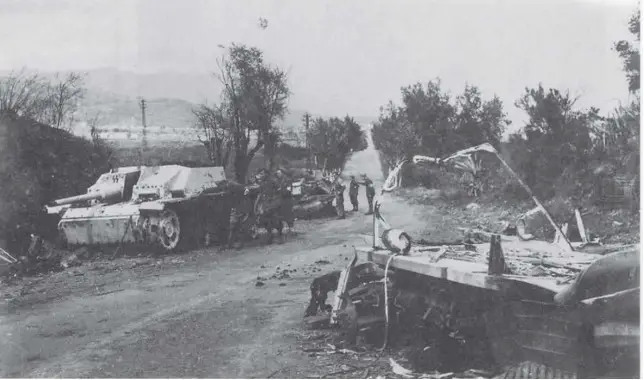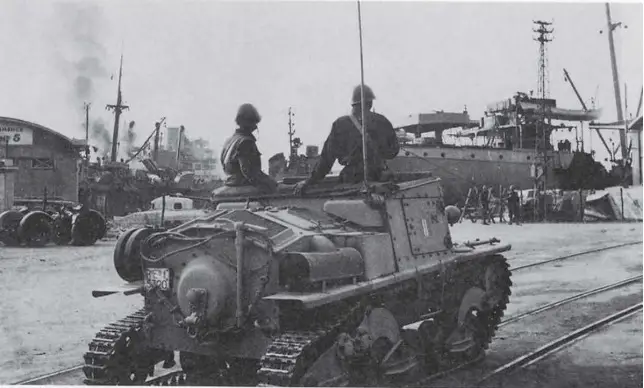Corsica in September 1943
The French territory of Corsica had enjoyed a quiet peaceful time in the first years of World War Two, however, things started to change in November 1942. Following the Allied landings in French-controlled North Africa (Operation Torch), the Germans decided to occupy the territories of Vichy France, in what was called “Operation Anton”. The Italians participated in the operation by occupying pieces of Southern France and also landing in Corsica. Here, the VII army corps arrived in November 1942 and consisted of the infantry divisions “Friuli” and “Cremona”, supported by the 225° and 226° “Costal” divisions. The occupation went almost unopposed and nothing relevant happened until September 1943. When the armistice between Italy and the allies was made public on the 8th of September 1943, all Italian military commands across Europe remained puzzled about what to do next and most importantly, how to handle the Germans. In Corsica, there was only a small garrison and some light vessels in the northern port of Bastia, while de brigade SS Reichsfuhrer was stationed in the South. On the 8th of September, the brigade moved to Bonifacio (the south-eastern tip of Corsica) to protect the landing zone for the German 90° Panzer grenadier division (around 25.000 men) coming from Sardinia. The commander of this division, General Fridolin von Senger und Etterlin, agreed with the Italian forces in Sardinia to peacefully evacuate the island. However, this would have created troubles for the Italians in Corsica.

Disposition of Italian Forces on the 8th September
The clash of Bastia
The evening of the 8th of September seemed to be a quiet one in Bastia. Anchored in the port, there were the Italian torpedo boats Aliseo and Ardito, the M.A.S.543. There were also two (armed) merchant ships, Humanitas and Sassari, manned by German personnel. The Kriegsmarine was also present, with two submarine chasers (UJ2203, UJ2219) and seven armed barges. At 23:40, the Aliseo left its anchorage, commanded by the famous submarine ace Carlo Fecia di Cossato. The Ardito was about to do the same but after a few minutes, the machine-gun fire of the German vessels invested the Italian ship. The Ardito was boarded and knocked out of action, as well as M.A.S. 543. The Germans quickly occupied the port and captured the unaware and surprised Italians. The Regia Marina command in the city launched the alarm and requested reinforcements to General Giovanni Magli, commanding the VII army corps.

Torpedo Boat Aliseo
At 5.00 AM on the 9th of September, Bersaglieri units of the Friuli division arrived in Bastia and started to repel the Germans. At 6.30, the Kriegsmarine unit started to leave their anchorages to break out from the port. Two armed barges were sunk by Italian coastal batteries, while the other seven were met by the Aliseo. Although outnumbered and outgunned, the Italian ship zig-zagged and fired continuously on the enemy vessels, receiving also a hit from an 88mm shell. In the space of an hour, the German ships were all sunk, and the Aliseo stood victorious. By 8:00 AM, Bastia was fully in control of the Italian forces. In the next two days, all the Italian navy units were evacuated from the base.

UJ2219 exploding after being hit by the Aliseo
Fights in Corsica
In the south, the 90° Panzer grenadier division was quickly disembarking and deploying northwards. The Italian Cremona division was sent to the area to halt the march of the Germans. However, the chaos of the first two days following the armistice and the general lack of motorisation slowed down the Italian reaction. On the 12th of September, German columns reached the outskirts of Bastia and defeated the Italian units there. With the Friuli division still stretched along the northern coast of Corsica, the Italians were in no position to stop the Germans and abandoned Bastia. At this point, the Italian units were also supported by Corsican resistance fighters, who joined them in attacking and sabotaging the Germans all over the island.
On the 13th of September, General Fridolin von Senger und Etterlin had received orders from Berlin to abandon Corsica, so his forces concentrated in Bastia and in the airfield on the East coast to start a sea and air evacuation.
In the South, the Cremona division increased the pressure on the Germans towards the town of Porto Vecchio and managed to capture 200 enemy soldiers.

Italian soldiers meeting Corsican resistance fighters

German Tanks Knocked Out Near Biguglia
On the 14th of September, Free French forces started to land in Ajaccio (on the west coast), determined to liberate the island and stop the German evacuation. Led by General Henry Martin, the French cooperated with the Italian forces under General Giovanni Magli and started to plan the recapture of Bastia. The French landed overall 2 infantry regiments, 2 infantry battalions, 1 company of light tanks and a unit of combat engineers.
The Liberation of Corsica
On the 23rd of September, Italian, French and partisan units liberated the southern town of Porto Vecchio while in the north they pushed from the west towards Bastia. The attack against the German perimeter began on the 28th slowly pushing back the defenders. On the 3rd of October, the hills around Bastia were taken and Bersaglieri units of the Friuli division reached the outskirts of Bastia. However, they were ordered to a halt because General Henry Martin wanted his units to enter first Bastia. The city was liberated on the 4th of October, but the Italians and the French failed to stop the German evacuation. Around 6.000 men reached mainland Italy on ships and barges while around 20.000 were evacuated by air.
The losses in the battle for Corsica were the following:
Italians: 600-800 killed, 2000 wounded
Germans: 700 killed and wounded, 200-300 captured
French: 75 killed and 240 wounded.

A Semovente 47/32 of the Friuli division
Sources
Barba, S. (1995). La resistenza dei militari Italiani all’estero: Francia e Corsica. Rivista Militare.
Fioravanzo, G. (1971). La Marina dall’8 settembre 1943 alla fine del conflitto. USMM.